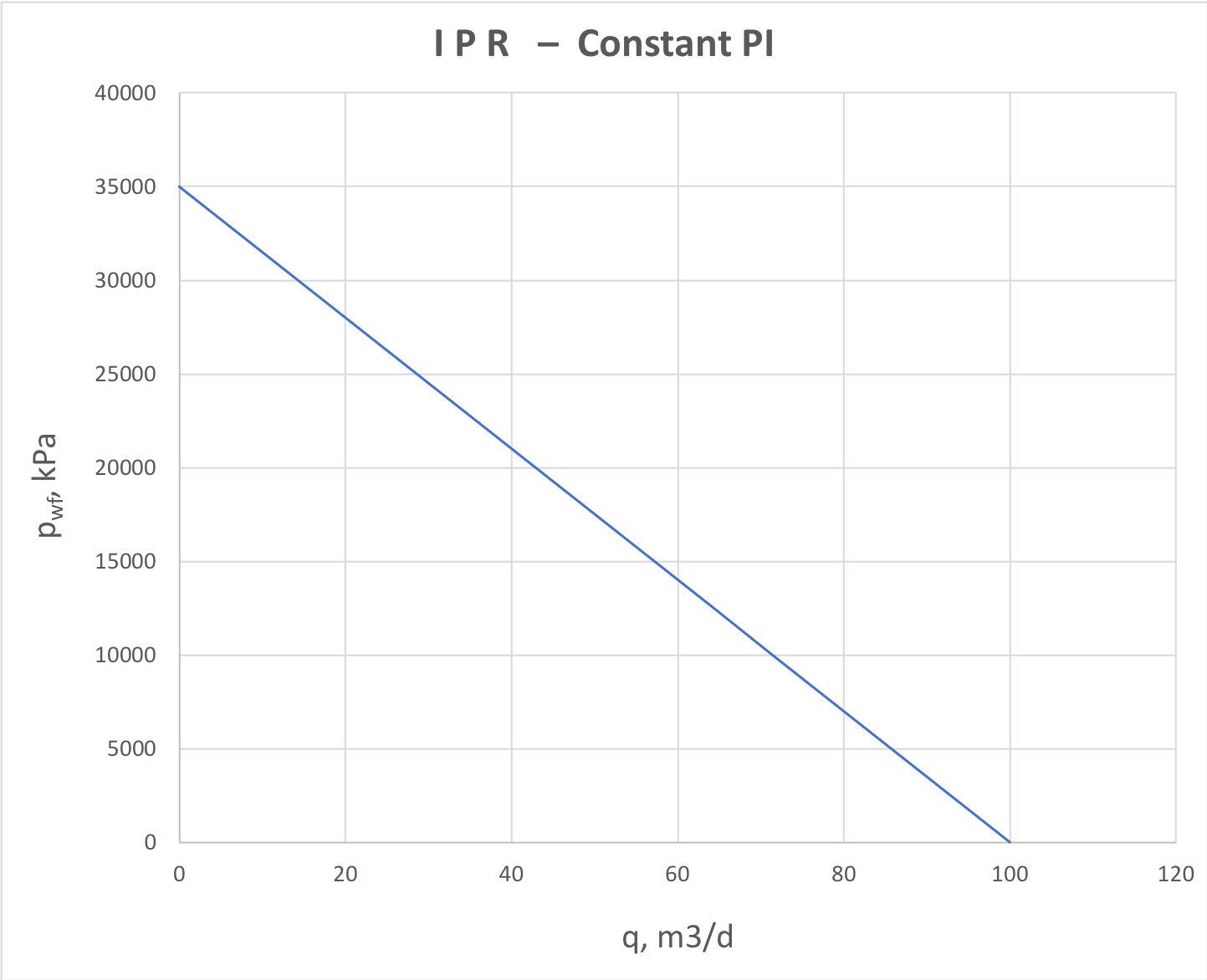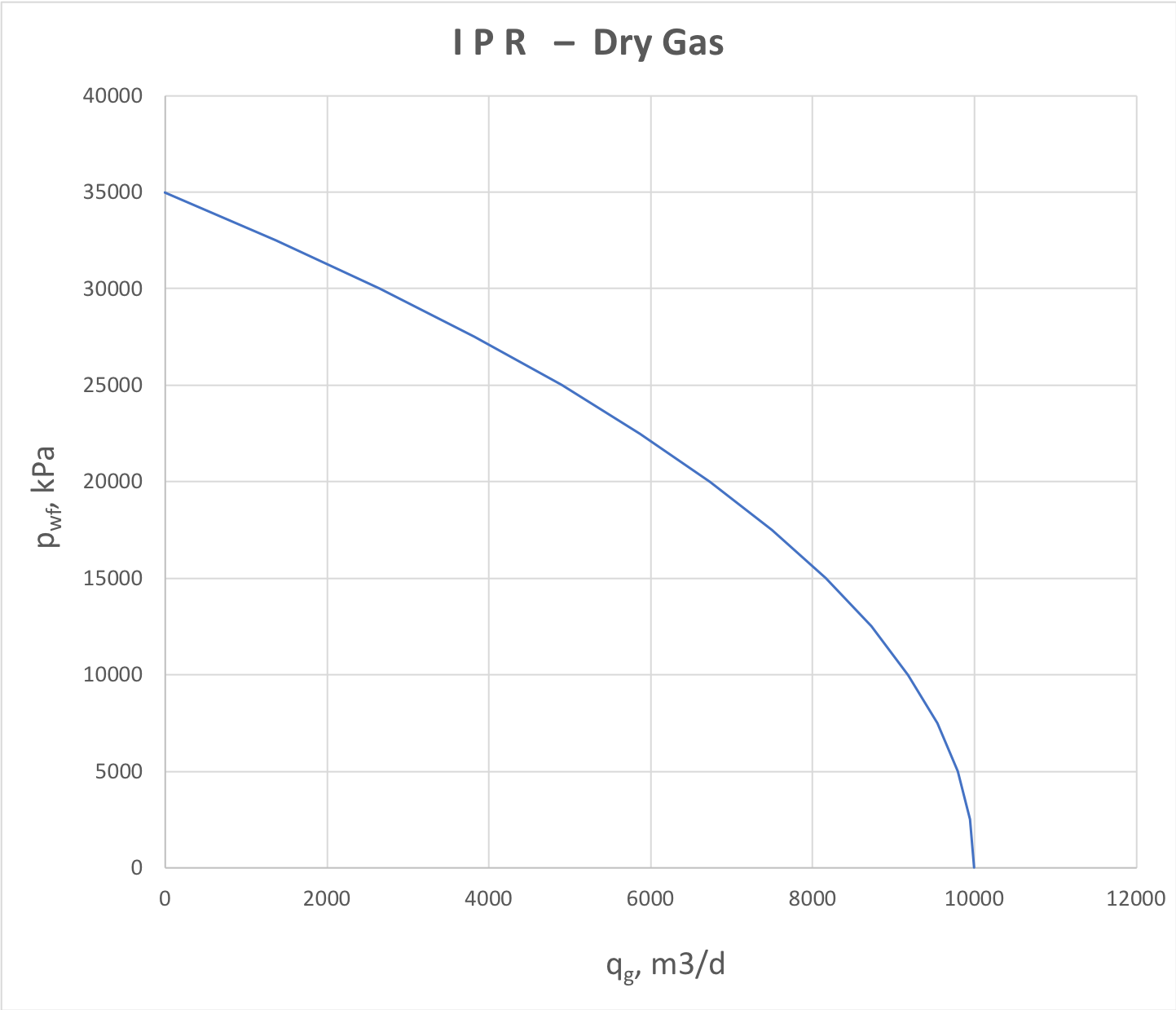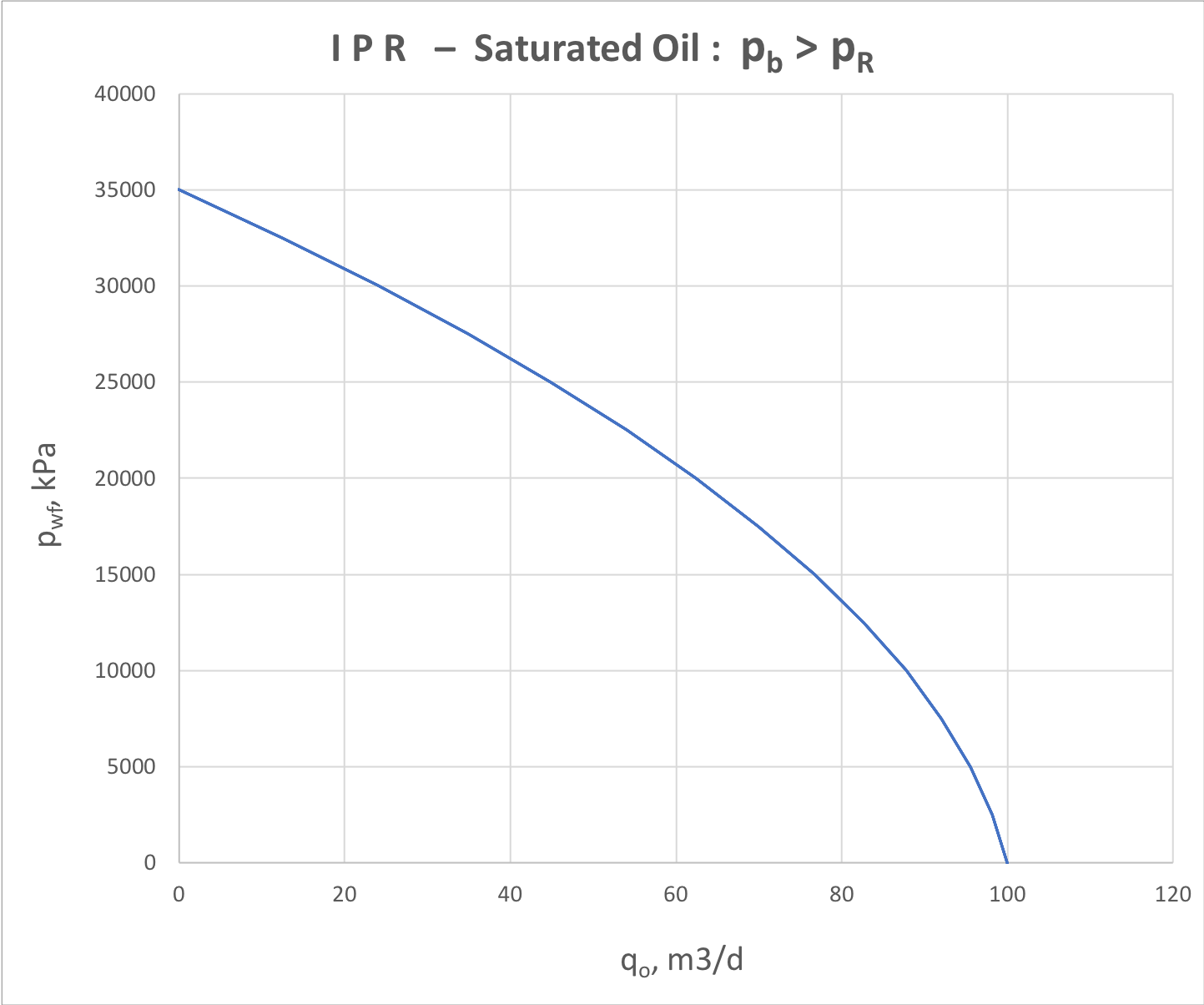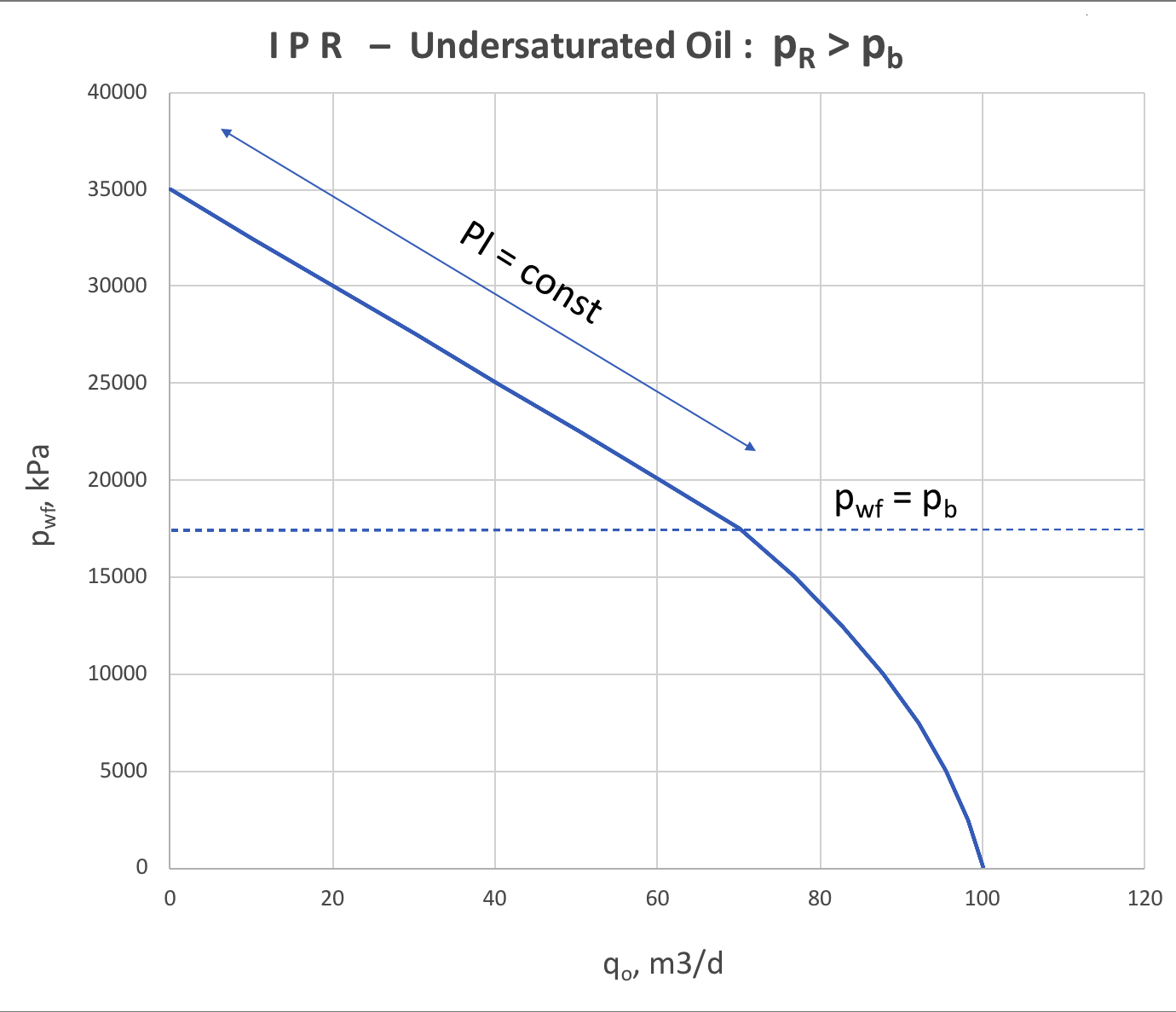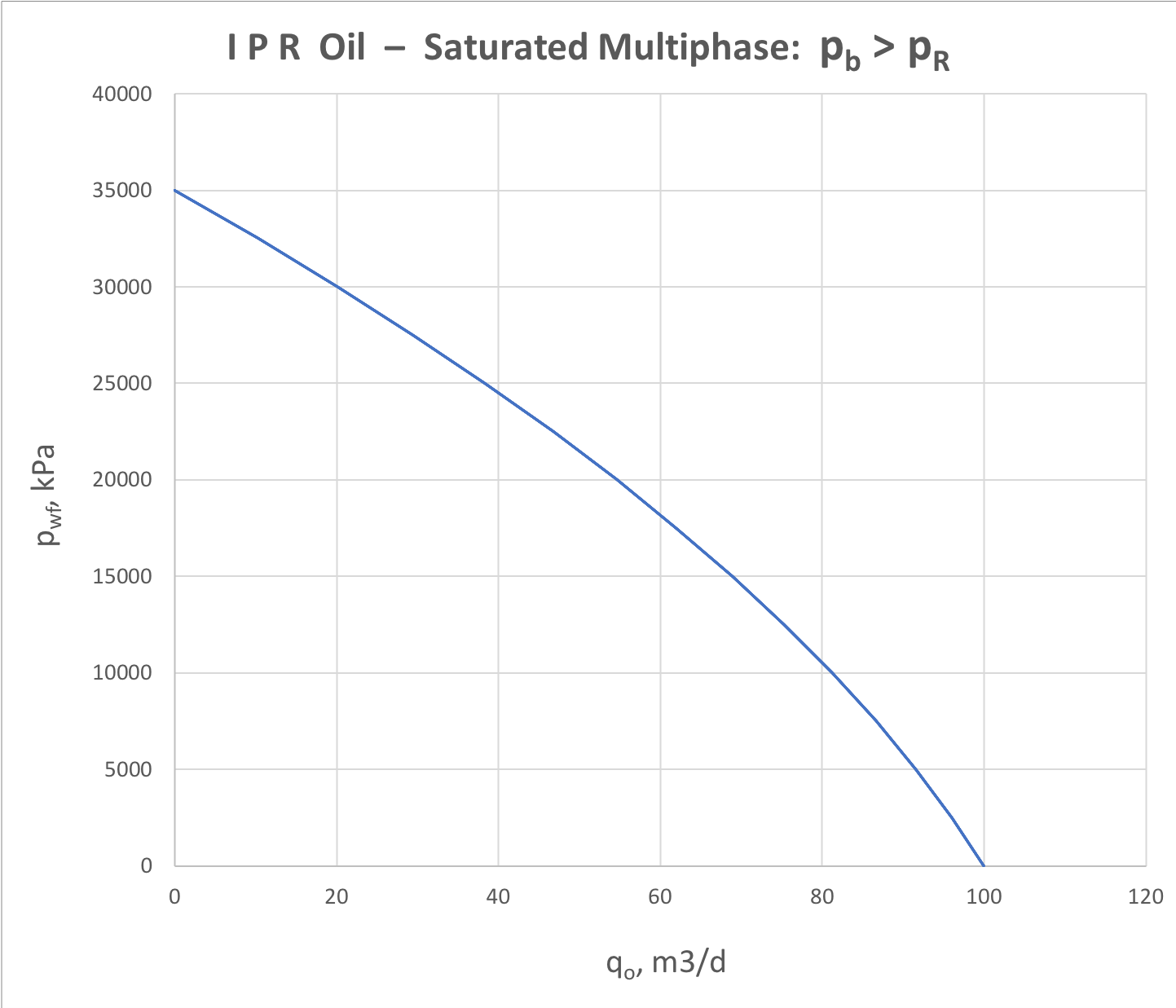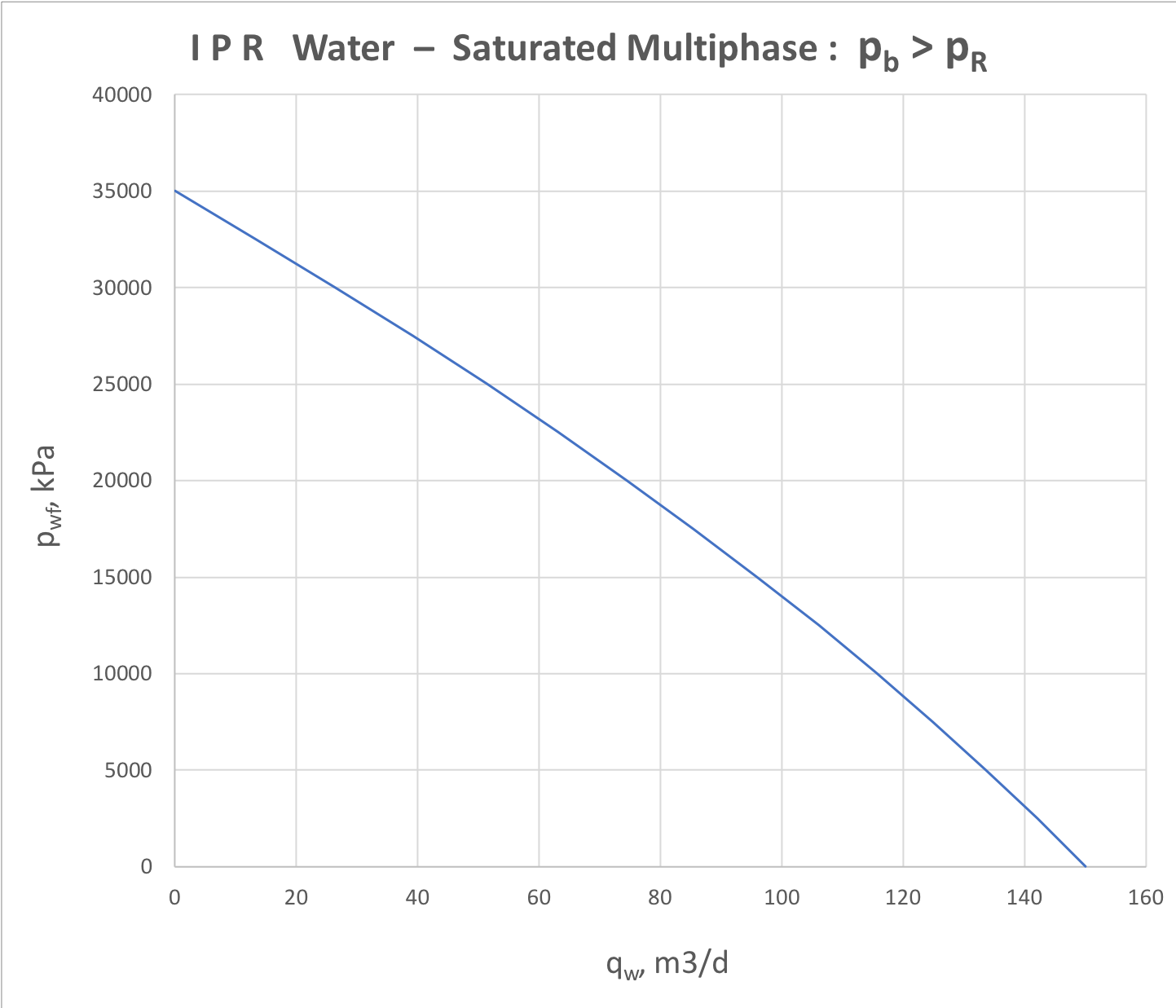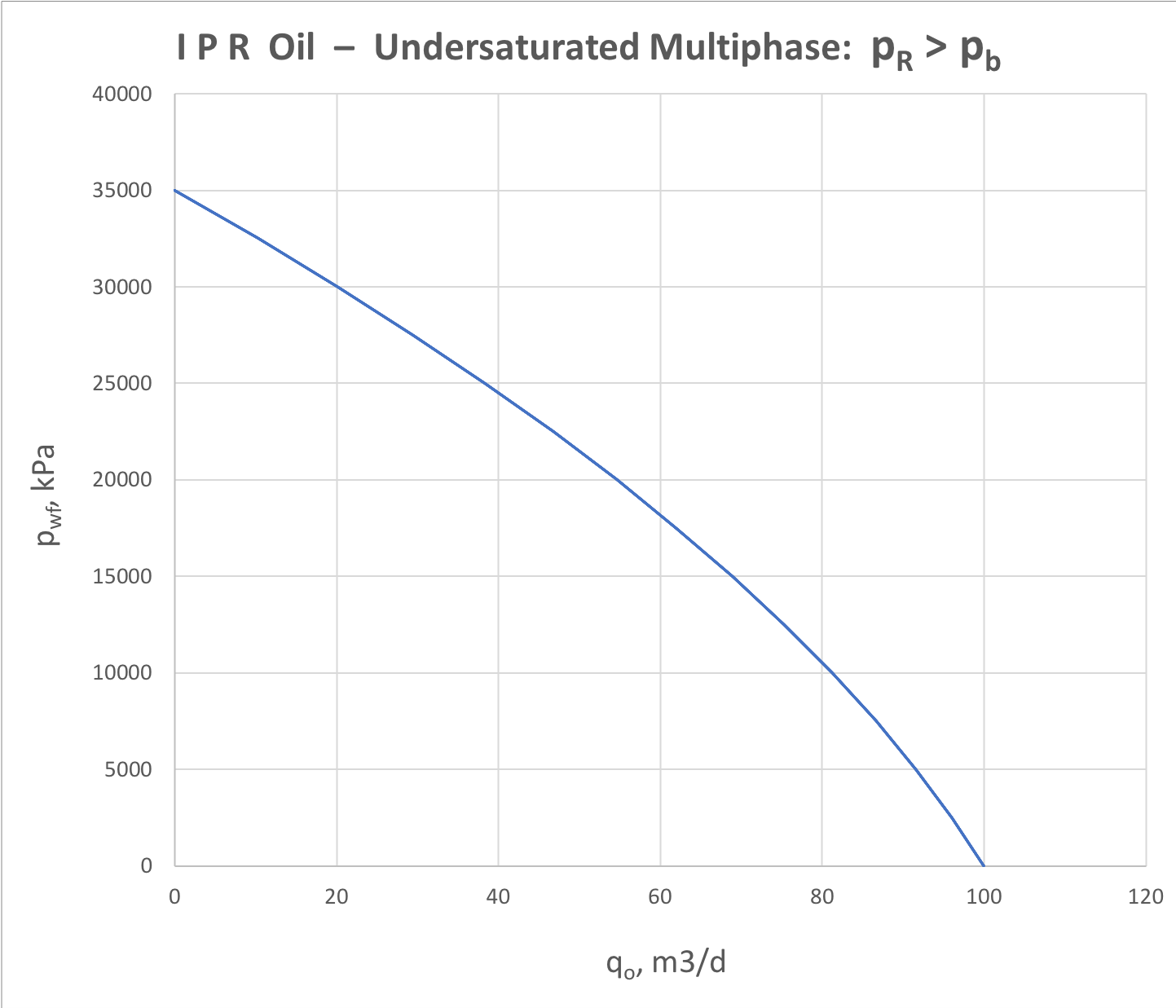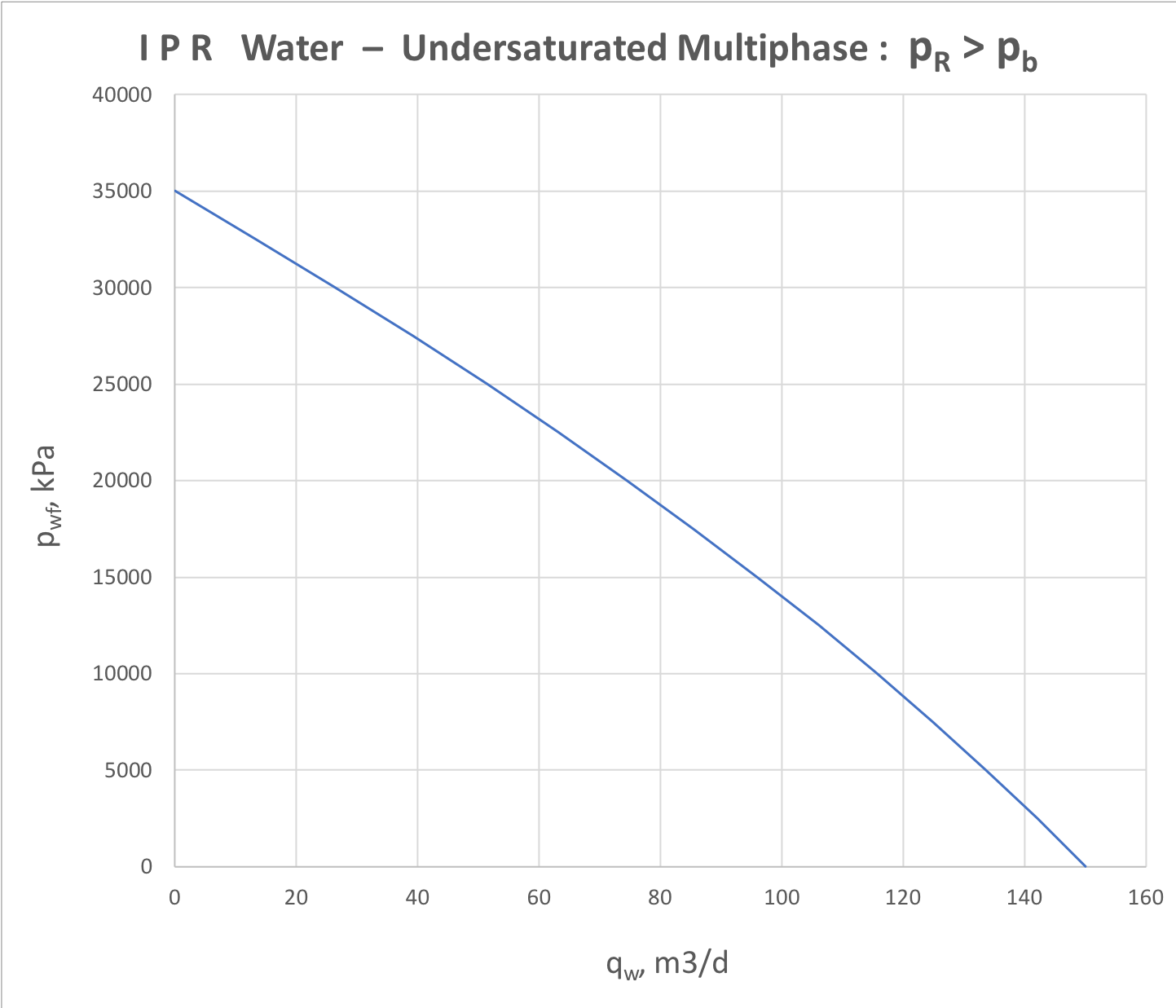The relation between the bottom-hole pressure
and surface flow rate during the stabilised formation flow:| LaTeX Math Block |
|---|
|
p_{wf} = p_{wf}(q) |
which may be non-linear.
The IPR (Inflow Performance Relation) analysis is closely related to well PI – Productivity Index
which is defined as below:
| LaTeX Math Block |
|---|
| J_{sO} = \frac{q_O}{p_R-p_{wf}} |
|
for oil producer with oil flowrate at surface conditions |
| LaTeX Math Block |
|---|
| J_s(q_G) = \frac{q_G}{p_R-p_{wf}} |
|
for gas producer with gas flowrate at surface conditions |
| LaTeX Math Block |
|---|
| J_s(q_g) = \frac{q_{GI}}{p_{wf}-p_R} |
|
for gas injector with injection rate at surface conditions |
| LaTeX Math Block |
|---|
| J_s(q_w) = \frac{q_{WI}}{p_R-p_{wf}} |
|
for water injector with injection rate at surface conditions |
where
| field-average formation pressure within the drainage area of a given well: | LaTeX Math Inline |
|---|
| body | p_R = \frac{1}{V_e} \, \int_{V_e} \, p(t, {\bf r}) \, dV |
|---|
|
|
Based on above defintions the aribitrary IPR (Inflow Performance Relation) can be wirtten in a general form:
| LaTeX Math Block |
|---|
|
p_{wf} = p_R - \frac{q}{J_s} |
providing that
has a specific meaning and sign as per the table below: | for producer |
| for injector |
| for oil producer |
| for gas producer or injector |
| for water injector or water producer or water production from oil producer |
| Note |
|---|
| Excerpt Include |
|---|
| Definition specifics on formation pressure and productivity index in between Dynamic Modelling, Well Flow Performance and Well Tests |
|---|
| Definition specifics on formation pressure and productivity index in between Dynamic Modelling, Well Flow Performance and Well Tests |
|---|
| nopanel | true |
|---|
|
|
The Productivity Index can be constant or dependent on bottom-hole pressure
or equivalently on flowrate .In general case of multiphase flow the PI
features a complex dependance on bottom-hole pressure (or equivalently on flowrate ) which can be etstablished based on numerical simulations of multiphase formation flow.For undersaturated reservoir the numerically-simulated IPR (Inflow Performance Relation)s have been approximated by analytical models and some of them are brought below.
These correlations are usually expressed in terms of
as alternative to | LaTeX Math Block Reference |
|---|
|
.They are very helpful in practise to design a proper well flow optimization procedure.
These correaltions should be calibrated to the available well test data to set a up a customized IPR (Inflow Performance Relation) model for a given formation.
For a single layer formation with low-compressibility fluid (water or dead oil) the PI does not depend on drawdown (or flowrate)
and IPR (Inflow Performance Relation) plot is reperented by a straight line (Fig. 1)
This is a typical IPR (Inflow Performance Relation) plot for water supply wells, water injectors and dead oil producers.
The PI can be estimated using the Darcy equation:
| LaTeX Math Block |
|---|
|
J_s = \frac{2 \pi \sigma}{ \ln \frac{r_e}{r_w} + \epsilon+ S} |
where
| LaTeX Math Inline |
|---|
| body | \sigma = \Big \langle \frac{k} {\mu} \Big \rangle \, h = k \, h\, \Big[ \frac{k_{rw}}{\mu_w} + \frac{k_{ro}}{\mu_o} \Big] |
|---|
|
– water-based or water-oil-based transmissbility above bubble point | LaTeX Math Block Reference |
|---|
| anchor | Perrine2phase_alpha |
|---|
| page | Linear Perrine multi-phase diffusion (model) |
|---|
|
,
for steady-state SS flow and for pseudo-steady state PSS flow.
The alternative form of the constant Productivity Index IPR (Inflow Performance Relation) is given by:
| LaTeX Math Block |
|---|
|
\frac{q}{q_{max}} = 1 -\frac{p_{wf}}{p_R} |
where
is the maximum reservoir deliverability when the bottom-hole is at atmosperic pressure and also called AOF – Absolute Open Flow.
For gas producers, the fluid compressibility is high and formation flow is essentially non-linear, inflicting the downward trend on the whole IPR (Inflow Performance Relation) plot (Fig. 2).
The popular dry gas IPR (Inflow Performance Relation) correlation is Rawlins and Shellhardt:
| LaTeX Math Block |
|---|
| anchor | IPRGas |
|---|
| alignment | left |
|---|
|
\frac{q}{q_{max}} = \Bigg[ \, 1- \Bigg( \frac{p_{wf}}{p_R} \Bigg)^2 \, \Bigg]^n |
where
is the turbulent flow exponent, equal to 0.5 for fully turbulent flow and equal to 1 for laminar flow.
The more accurate approximation is given by LIT (Laminar Inertial Turbulent) IPR model:
| LaTeX Math Block |
|---|
|
a \, q + b \, q^2 = \Psi(p_R) - \Psi(p_{wf}) |
where
– is pseudo-pressure function specific to a certain gas PVT model, is laminar flow coefficient and is turbulent flow coefficient.
It needs two well tests at two different rates to assess
| LaTeX Math Inline |
|---|
| body | \{ q_{max} \, , \, n \} |
|---|
|
or . But obviously more tests will make assessment more accruate.
For saturated oil reservoir the free gas flow inflict the downward trend of IPR (Inflow Performance Relation) plot similar to dry gas (Fig. 3).
The analytical correlation for saturted oil flow is given by Vogel model:
| LaTeX Math Block |
|---|
|
\frac{q}{q_{max}} = 1 - 0.2 \, \frac{p_{wf}}{p_R} - 0.8 \Bigg(\frac{p_{wf}}{p_R} \Bigg)^2 \quad , \quad p_b > p_R > p_{wf} |
For undersaturated oil reservoir
the behavior of IPR (Inflow Performance Relation) model will vary on whether the bottom-hole pressure is above or below bubble point.When it is higher than bubble point
then formation flow will be single-phase oil and production will follow the constant IPR (Inflow Performance Relation). When bottom-hole pressure goes below bubble point
the near-reservoir zone free gas slippage also inflicts the downward trend at the right side of IPR (Inflow Performance Relation) plot (Fig. 3).It can be interpreted as deterioration of near-reservoir zone permeability when the fluid velocity is high and approximated by rate-dependant skin-factor.
The analytical correlation for undersaturated oil flow is given by modified Vogel model:
| LaTeX Math Block |
|---|
|
\frac{q}{q_b} = \frac{p_R - p_{wf}}{p_R - p_b} \quad , \quad p_R > p_{wf} > p_b |
| LaTeX Math Block |
|---|
| anchor | ModifiedVogel |
|---|
| alignment | left |
|---|
|
q = (q_{max} - q_b ) \Bigg[ 1 - 0.2 \, \frac{p_{wf}}{p_b} - 0.8 \Bigg(\frac{p_{wf}}{p_b} \Bigg)^2 \Bigg] + q_b \quad , \quad p_R > p_b > p_{wf} |
with AOF
related to bubble point flowrate via following correlation:| LaTeX Math Block |
|---|
|
q_{max} = q_b \, \Big[1 + \frac{1}{1.8} \frac{p_b}{(p_r - p_b)} \Big] |
For saturated 3-phase water-oil-gas reservoir the IPR (Inflow Performance Relation) analysis is represented by oil and water components separately (see Fig. 4.1 and Fig. 4.2).
The analytical correlation for saturated 3-phase oil flow is given by Wiggins model:
| LaTeX Math Block |
|---|
|
\frac{q_o}{q_{o, \, max}} = 1 - 0.52 \, \frac{p_{wf}}{p_R} - 0.48 \Bigg(\frac{p_{wf}}{p_R} \Bigg)^2 |
| LaTeX Math Block |
|---|
|
\frac{q_w}{q_{w, \, max}} = 1 - 0.72 \, \frac{p_{wf}}{p_R} - 0.28 \Bigg(\frac{p_{wf}}{p_R} \Bigg)^2 |
For undersaturated 3-phase water-oil-gas reservoir the IPR (Inflow Performance Relation) analysis is represented by oil and water components separately (see Fig. 4.1 and Fig. 4.2).
| Show If |
|---|
|
The analytical correlation for saturated 3-phase oil flow is given by Wiggins model: | LaTeX Math Block |
|---|
| \frac{q_o}{q_{o, \, max}} = 1 - 0.52 \, \frac{p_{wf}}{p_R} - 0.48 \Bigg(\frac{p_{wf}}{p_R} \Bigg)^2 |
| LaTeX Math Block |
|---|
| \frac{q_w}{q_{w, \, max}} = 1 - 0.72 \, \frac{p_{wf}}{p_R} - 0.28 \Bigg(\frac{p_{wf}}{p_R} \Bigg)^2 |
|
